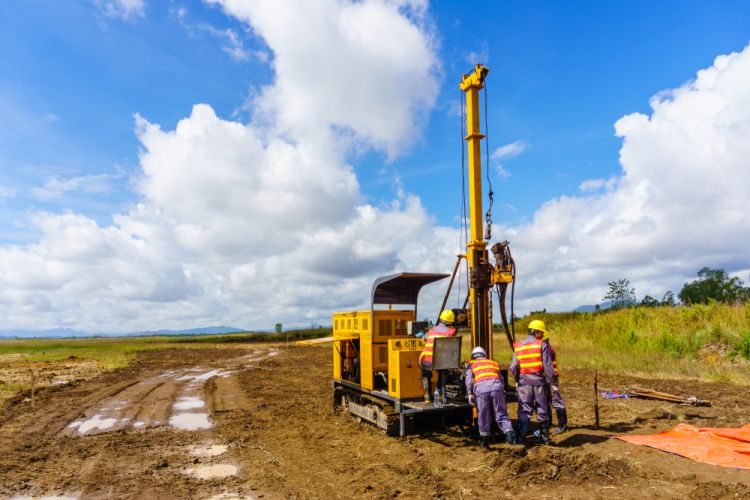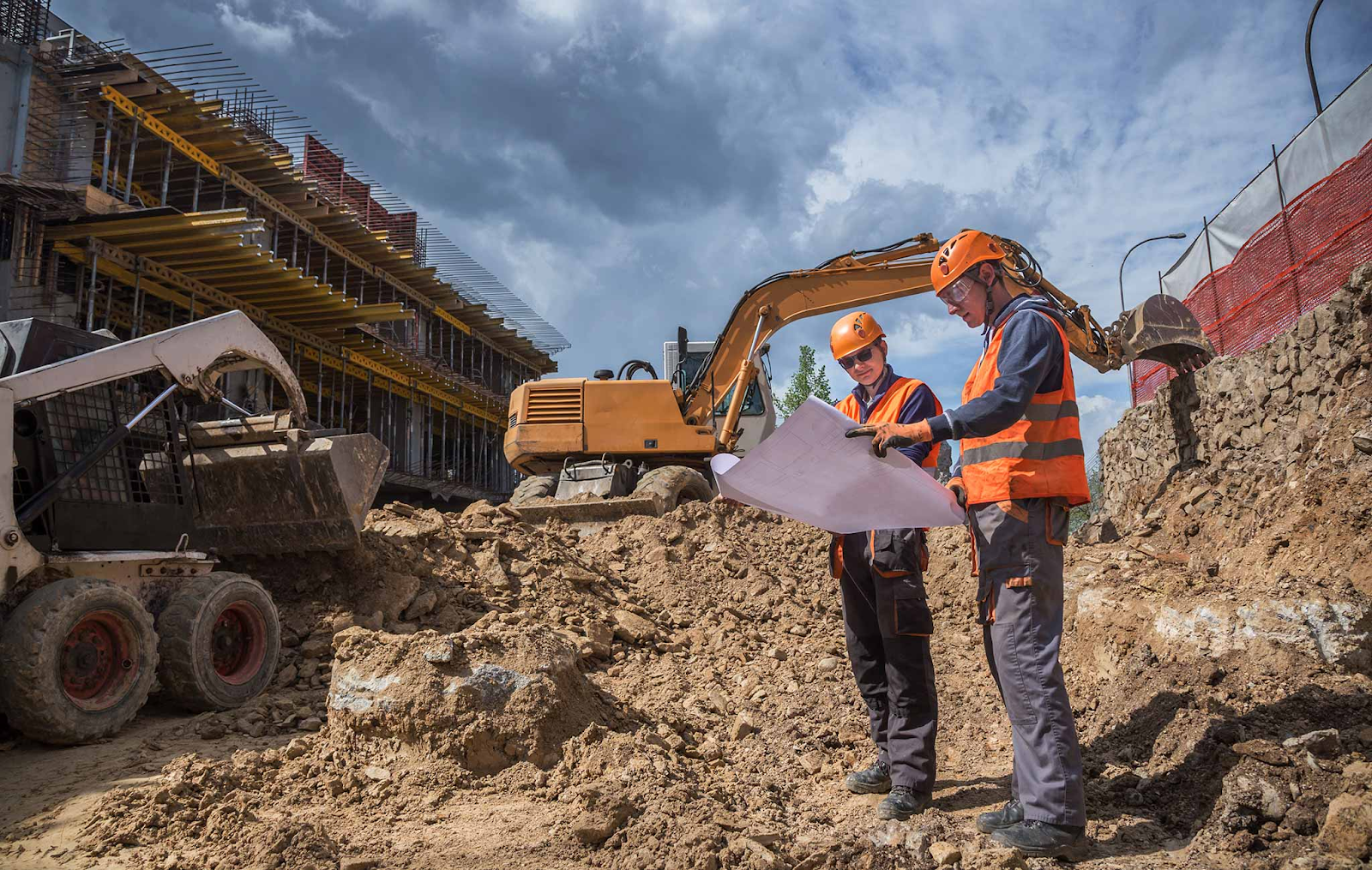Not known Details About Geotechnical Engineering For Construction Projects
Fascination About Geotechnical Engineering For Construction Projects
Table of ContentsTop Guidelines Of Geotechnical Engineering For Construction ProjectsThe Basic Principles Of Geotechnical Engineering For Construction Projects All about Geotechnical Engineering For Construction ProjectsGet This Report about Geotechnical Engineering For Construction ProjectsOur Geotechnical Engineering For Construction Projects PDFsGeotechnical Engineering For Construction Projects Fundamentals ExplainedThe 3-Minute Rule for Geotechnical Engineering For Construction ProjectsSome Known Details About Geotechnical Engineering For Construction Projects
Accompanying this enhanced intricacy comes geological and environmental factors that influence the style of the structure, which is probably the most fundamental part of any kind of growth. People require to trust that structures, bridges, and roads will stand the examination of time. A Geotechnical engineer suggests on how a framework can best be sustained offering its distinct circumstances What's concealed below the surface area of the ground is likely one of the most crucial item of information that a Geotechnical Designer wants.These examples are after that examined by the laboratory to figure out soil composition (Geotechnical Engineering for Construction Projects). The malfunction of sand, silt, clay, and various other materials existing in the soil, assists the designer determine what one-of-a-kind attributes the website has and what the implications of those might be. Naturally dirt composition is just one examination that can be done on examples
Geotechnical Engineering For Construction Projects for Beginners
Based upon these tests, there may be much more soil borings that are pierced, or the engineer might have adequate details from the first examinations to make a referral to the customer on just how best to wage their task. Results are normally reported with borings logs which show the soil structure and characteristics at a variety of midsts.
Geotechnical engineers are accountable for understanding the residential properties of natural deposits and using this expertise to create risk-free, cost-efficient designs for building tasks. It is a crucial part of any civil engineering task, as it is made use of to establish the viability of a site for building and to make sure the structure's safety.
This consists of performing lab examinations on the samples and using geophysical approaches such as seismic refraction and electrical resistivity studies. This information is utilized to analyze the site's viability for building and construction and to figure out the sort of structure that must be used. Geotechnical design assesses dirt problems, determines possible dangers, chooses an ideal foundation system for the suggested structure, and identifies the finest foundation layout for an offered project.
See This Report on Geotechnical Engineering For Construction Projects
The framework may come to be unpredictable or collapse without appropriate soil stabilisation, resulting in pricey fixings and potential injury. The stabilization procedure entails using different methods to enhance the stability of the dirt, such as compaction, grouting, and the addition of strengthening products. Without soil stablizing, the threats related to building and construction jobs would certainly be a lot higher, and the outcomes a lot less dependable.
Geotechnical designers conduct site investigations to evaluate the soil's residential or commercial properties and identify possible threats. They develop and carry out soil stablizing methods, such as adding concrete, lime, or various other maintaining agents, to improve the dirt's stamina and stability.
Geotechnical Engineering For Construction Projects - Truths
Geotechnical engineers are important in aiding to make certain that dirt stabilization is done properly to ensure that the framework is secure and safe. Geotechnical design is also made use of to assess soil problems and determine possible dangers. This includes assessing prospective flooding, landslides, and other all-natural calamities that can affect the foundation.
Geotechnical engineers utilize this understanding to do site investigations, soil, and rock screening, and to analyze the results to identify the suitable style parameters for a project. This details is used to make certain that the foundation, keeping wall surfaces, slopes, and other frameworks developed on or within the subsurface products have adequate stability and resistance to exterior loads, such as quakes, wind, and water.
These structures require a deep understanding of the actions of the subsurface materials, in addition to the capability to take care of the impact of excavation and construction on the surrounding environment. Geotechnical engineers utilize their experience to figure out the suitable style specifications for these structures, such as the dimension and shape of the passage, the toughness of the supporting rock, and the kind and quantity of assistance called for.
Along with the design and building and construction of frameworks, geotechnical design likewise plays an important duty in the rehab and maintenance of existing frameworks. As structures age, they may experience degradation or various other issues that impact their security and efficiency. Geotechnical engineers utilize their competence to assess the condition of these structures, recognize the root causes of the issues, and establish strategies to resolve them.
The Buzz on Geotechnical Engineering For Construction Projects
In this write-up, I will go over the role of geotechnical design and the types of problems geotechnical engineers fix. Geotechnical designers (geotechs) are associated with almost every sort of civil design task. Nevertheless, every framework is supported by soil or rock unless it is floating, flying, or dropping.
Geotechs are generally most involved at the beginning of a project. Geotechnical Engineering read this for Construction Projects. Some of the tasks that a geotech may be accountable for are investigating subsurface conditions, figuring out called for laboratory testing of soil and rock, translating the subsurface expedition results, and composing reports that document the website conditions and supply suggestions for foundations, fill requirements, incline security, etc
It is not unusual for geotechnical designers to focus on only one of the areas noted above and study that subject their whole job. Geotechnical design is a crucial element of any kind of civil design project. Despite how excellent a structure is developed, it will not be great for long if the structure is poor.
The Definitive Guide for Geotechnical Engineering For Construction Projects

Oftentimes, points that might not appear important end up being essential years later on when problems arise. One last point to keep in mind: geotechnical engineering is wed to geology. Despite just how wonderful your design know-how is, if something crucial is missed in the geologic characterization at a site, your competence may not conserve you.
Jese lives in West Virginia with his other half and child. He takes pleasure in crawling around on any kind of landslide he can discover and spending time fly fishing on the water. He can be located on LinkedIn. I hope you appreciated this week's post by guest writer Jese Vance. If you want your firm perhaps joining the Civil Engineering Collective, please call us below or call us at 800-920-4007. I hope you'll join us.
Geotechnical Engineering For Construction Projects Can Be Fun For Everyone

It is essential to know the soil condition before making the type site web and depth of structure needed for the framework. In order to understand the subsurface dirt condition, a geotechnical examination is required.
The Only Guide to Geotechnical Engineering For Construction Projects
As soon as the test results come, the Geotechnical Engineer evaluations the report, which outlines the check my source dirt and rock buildings groundwater problem and the connected threats. The kind of structure needed to construct the framework is after that determined. Based upon the recommendation of the Geotechnical Designer, the structural engineer after that creates the framework.